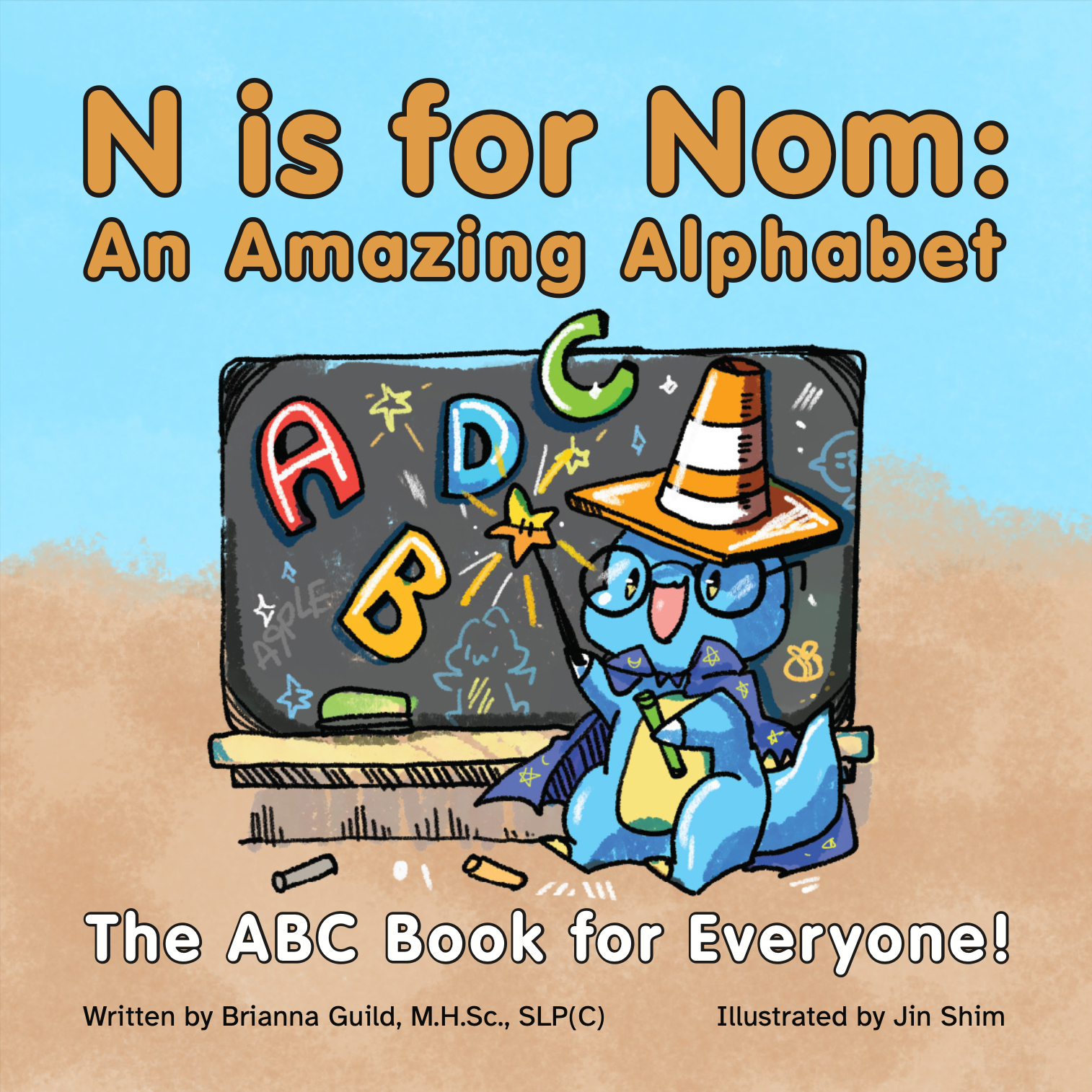Your New Favourite Alphabet Book
Written by: Brianna Guild, MHSc SLP(C)
Date: November 18, 2025
I’ve never met an alphabet book I actually liked…
They’re usually filled with poor word choices, like “C is for chimpanzee” and “X is for xylophone”, inconsistencies with vowel sounds, such as “A is for apple” (which is a “short vowel” sound") but then “I is for ice cream” (which is a “long vowel” sound), and uncommon vocabulary that isn’t familiar to early learners.
So, I decided to create an alphabet book that is more grounded in the principles of effective alphabet instruction!
I’m thrilled to announce that the alphabet book I wrote, N is for Nom: An Amazing Alphabet, is now available! You can get the digital version immediately, and the physical board book is open for pre-orders (with shipments hopefully starting later in December 2025).
Here is my explanation and rationale behind N is for Nom: An Amazing Alphabet…
The large tracing font utilizes a blue outline for consonants and a red outline for vowels (a, e, i, o, u). The letter Y is half blue and half red to indicate that it can represent either a consonant or vowel sound.
The tracing lines are numbered to assist with proper letter formation. To trace them, begin by placing your finger on the number 1, then continue in numerical order (e.g. 2, 3, etc.). This numbering helps you teach a consistent beginning point and end point when working on letter formation. For more information and teaching tips, read the letter names, sounds, and forms blog.
The key words are primarily common words that most children are likely familiar with (e.g. apple, book, cats).
The target letter sound is at the beginning of key words, except for the letter X, which represents its most common sound /ks/ at the end of words (e.g. fox), and the letter Y, which represents a vowel sound at the end of words (e.g. cry, baby).
For consonants that can represent more than one sound, the key words were chosen to reflect the primary (most common) sound (e.g. “C spells /k/ as in cat” and “G spells /g/ as in games”). In literacy instruction, primary sounds are typically taught first, and then secondary (less common) sounds are introduced.
For each vowel (a, e, i, o, u), the first sentence contains what is commonly referred to as the “short vowel” sound (e.g. “an alligator eating apples”), and the second sentence contains what is commonly referred to as the “long vowel” sound (e.g. “acorns on an apron”).
In some dialects, a vowel sound may become nasalized (produced in the nose) if it is followed by a nasal consonant (e.g. /m/ or /n/). It is possible you may hear or produce a nasalized vowel in the key words insect, on, umbrella. If this is the case, focus on the other key words in those sentences: itchy, octopus, up.
The letter Y can represent either a consonant or a vowel sound. The first sentence contains the consonant sound (“yo-yos in the yard”), and the second sentence contains the two most common vowel sounds the letter Y represents (“a cry from the baby’”). Contrary to popular belief, the letter Y represents a vowel sound most of the time it occurs in English writing!
Letter A page: large tracing font with a red outline and sentences for both the “short” and “long” vowel sounds.
Letter B page: large tracing font with a blue outline and a key word sentence.
I hope you and your students/children enjoy N is for Nom: An Amazing Alphabet. It was created with care, intention, and a passion for helping young readers build strong foundational literacy skills.
You can download a PDF copy of my explanation and rationale here.
You can pre-order N is for Nom: An Amazing Alphabet here.
Join the SLP Literacy Corner email newsletter to get access to exclusive free resources, including letter + sound review pages to help you teach, review, and assess your students’ letter knowledge. Sign up here!








